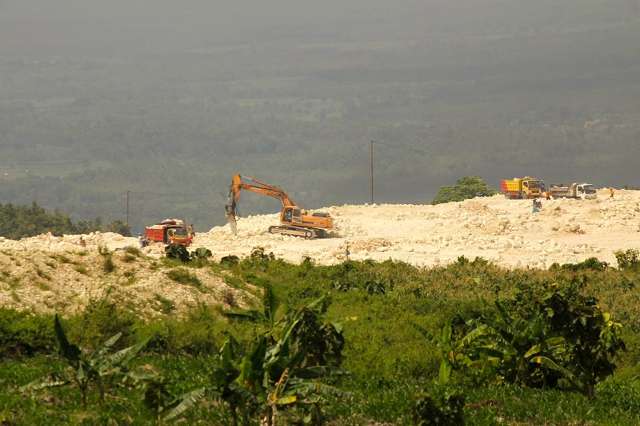- Activists in Indonesia demand the government to issue a new regulation aimed at better protecting the country’s karsts, the unique rocky landscapes that are home to species found nowhere else on Earth.
- The current regulation governing the management of this limestone topography fails to frame karst preservation in terms of its role as an ecosystem supporting a diverse range of animal and plant life.
- Activists argue that efforts to regulate the protection of the landscape have received opposition from influential powers that depend on the mineral deposits that make up the karst.
YOGYAKARTA, Indonesia — Activists in Indonesia have called for the government to issue a new regulation aimed at better protecting the country’s karsts, the unique rocky landscapes that are home to species found nowhere else on Earth.
The current regulation governing the management of this limestone topography dates from 2012, issued by the ministry for mines and energy, which frames karst preservation in terms of its geological importance rather than its role as an ecosystem supporting a diverse range of animal and plant life.
“We need a regulation with a special agency that oversees the function, exploitation and protection of karst ecosystems,” said Wahyu Perdana, campaign manager for food, water and essential ecosystems at the Indonesian Forum for the Environment (Walhi), at a public discussion last month.

Petrasa Wacana, coordinator for conservation, advocacy and campaign at the Indonesian Speleology Community (MSI), called for a government regulation — which would supersede the ministerial one — that would more holistically govern the management of karst ecosystems, including allowing better conservation efforts and imposing stricter punishment for damage to or destruction of these landscapes.
A draft government regulation, known as an RPP, has been in the works since 2010, but opposition from the ministry of mines and the cement industry — which has long eyed the mineral deposits that make up the karst — has prevented it from being issued, according to Petrasa.
“If the government continues to be weak in protecting karst ecosystems, the damage will expand and increase the threat of an ecological disaster, particularly drought,” he said. “The importance of a government regulation for karsts is for us to be able to calculate the damage and to design efforts to protect the ecological system.”
There’s increased urgency to strengthen the protection of these unique landscapes, as the administration of President Joko “Jokowi” Widodo pushes an ambitious infrastructure-building program that has seen cement companies ramp up their production. Mining activities, plantations and large developments such as roads and resorts also continue to pose a threat to Indonesia’s karsts, which span an estimated 154,000 square kilometers (59,500 square miles), or more than 8 percent of the country’s territory.
The extractive industries, including mining of limestone for cement, accounted for 48 percent of Indonesia’s total carbon dioxide emissions, according to a 2014 report from the environment ministry.
More than 40 percent of the 72,500 square kilometers (28,000 square miles) of karst in East Kalimantan and Central Kalimantan, two provinces on the Indonesian part of Borneo, are currently under threat from miners, according to Walhi. Similar activities also threaten the biodiversity in karst ecosystems in other provinces, including 190 square kilometers (73 square miles) in South Sulawesi, 254 square kilometers in Aceh and 6.5 square kilometers in West Sumatra.

Formed millions of years ago by sea life, the eroded limestone ridges, towers, sinkholes, caves and other geological features that comprise karsts are home to a diverse range of plant species as well as insects, bats and other fauna found nowhere else on Earth.
The animals that inhabit these ecosystems are important to the people who live near them, serving as pest control, pollinators and a sustainable source of income — in the case of swifts whose nests are a prized delicacy in Chinese cuisine. Karst landscapes also play an important role in groundwater management.
“We must not be partial in understanding the karst ecosystem,” said Walhi’s Wahyu. “We need to take into account the environmental, economic and socio-cultural impacts of damaging these landscapes.”
This story was reported by Mongabay’s Indonesia team and was first published on our Indonesian site on Dec. 3, 2017.
Banner image: Limestone mountains in Papua. Photo by Rhett A. Butler/Mongabay.
FEEDBACK: Use this form to send a message to the author of this post. If you want to post a public comment, you can do that at the bottom of the page.
